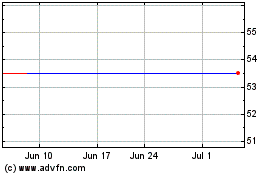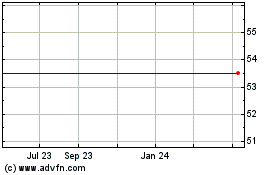CIT Executive Spotlight Examines Importance in Choosing a Capital Equipment Financing Partner
September 17 2015 - 8:30AM
Business Wire
Today’s market is saturated with capital equipment investment
dollars from lenders that may not have expertise in the specific
sectors in which they’re lending. And while the access to capital
is a boon from a low interest rate perspective, the lack of
industry expertise and understanding of a business can result in
onerous lending terms when the market retreats. These are some of
the observations presented by Eric Miller, Group Head and Managing
Director of CIT Capital Equipment Finance, a division of CIT Group
Inc. (NYSE:CIT), a leading provider of commercial lending and
leasing services, in “Capital Equipment Finance: The Lifeblood of
Growth,” (www.cit.com/miller) the latest piece of market
intelligence in the CIT Executive Insights video series.
This Smart News Release features multimedia.
View the full release here:
http://www.businesswire.com/news/home/20150917005116/en/
Eric Miller, Group Head and Managing
Director of CIT Capital Equipment Finance. (Photo: Business
Wire)
“Due to today’s positive market conditions, a wide variety of
lenders can offer low rates without necessarily offering deep
experience lending within a business’ particular industry,” said
Miller. “This lack of expertise can cause friction when a sector
goes through a natural cycle. A lender may try to impose harsh
terms, underscoring a lack of knowledge about the industry and the
business’ ability to operate in a natural downturn, which
ultimately put the business at risk.”
Miller highlights several considerations middle market
businesses seeking capital finance partners should consider:
- Search for lenders that have
industry expertise – Corporate borrowers should construct bids
that will attract lenders with a depth of experience in their
respective sectors. It’s much easier to deal with a lender that
understands your business and its natural cycles.
- Place a premium on tailored
solutions – A lender should thoroughly understand the company’s
business model, industry situation and the lifecycle of the
specific equipment. By understanding the above, a lender can create
a more tailored solution that can better withstand bumps in the
road.
- Think past the short term – The
lender that offers you a low interest rate today may not be
suitable when the market turns. New deal terms may put stress on
liquidity, ultimately jeopardizing a business’ strength.
EDITOR’S NOTE:
CIT thought leadership content can be found at View from the
Middle™ (cit.com/viewfromthemiddle) and our CIT Point of View blog
(cit.com/pov). View our corporate video (cit.com/corporatevideo)
and follow us on Twitter, LinkedIn, YouTube and Facebook. Register
to receive press releases at cit.com/newsalerts.
About CIT
Founded in 1908, CIT (NYSE:CIT) is a financial holding company
with more than $65 billion in assets. Its principal bank
subsidiary, CIT Bank, N.A. (Member FDIC, Equal Housing Lender), has
more than $30 billion of deposits and more than $40 billion of
assets. It provides financing, leasing and advisory services
principally to middle market companies across more than 30
industries primarily in North America, and equipment financing
and leasing solutions to the transportation sector. It also offers
products and services to consumers through its Internet bank
franchise and a network of retail branches in Southern California,
operating as OneWest Bank, a division of CIT Bank, N.A. cit.com
View source
version on businesswire.com: http://www.businesswire.com/news/home/20150917005116/en/
CIT MEDIA RELATIONS:C. Curtis Ritter, 973-740-5390Senior
Vice President of Corporate CommunicationsCurt.Ritter@cit.comorMatt
Klein, 973-597-2020Vice President, Media
RelationsMatt.Klein@cit.comorCIT INVESTOR RELATIONS:Barbara
Callahan, 973-740-5058Senior Vice
PresidentBarbara.callahan@cit.com
CIT (NYSE:CIT)
Historical Stock Chart
From Mar 2024 to Apr 2024

CIT (NYSE:CIT)
Historical Stock Chart
From Apr 2023 to Apr 2024
